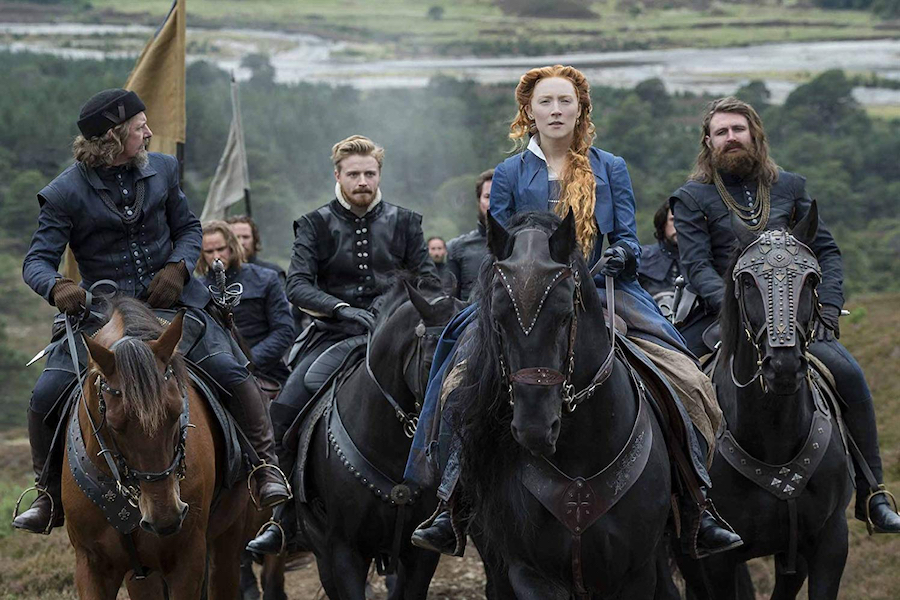
‘Mary Queen of Scots’ Review
These days, we view British royalty as little more than telegenic subjects for gossip sites, though for hundreds of years, the crown carried real power. Of course, the system never made any logical sense. Why should a baby born to the “right” family be pre-ordained to rule the country? These birthrights even caused much confusion and debate…and wars…when there was uncertainty about which kid was the most important. And yes, kids is the proper term. Mary Stuart (Mary Queen of Scots), was six days old when her father King James V died, and she ascended to the throne (though the actual ruling was done by regents until she was older).
Saoirse Ronan stars as Mary and Margot Robbie is Queen Elizabeth I (daughter of King Henry VIII and Anne Boleyn). The two were cousins (not sisters), and the film examines many aspects of this era: the struggle for the throne between the two, the unusual circumstances that found two women in power, the behind-the-scenes maneuvering by men in an effort to wrestle power from the women, the importance of marriage and heirs, the conflicts between Catholics and Protestants, and the bizarre arrangement that caused Mary to spend nearly half her life in custody.
Director Josie Rourke is best known for her stage productions, some of which have been broadcast live in cinemas. This is her debut feature film, and her talent is quite obvious. She gets “big” with stunning sweeping vistas, and intimate with dark chamber meetings. The castles look and feel like castles, and not the sound stage sets we often see in costume productions. The film is a thing of beauty and the two lead actresses are sublime…and with much more screen time, Ms. Ronan delivers a ferocious performance.
The screenplay from Beau Willimon (creator, producer and head writer of “House of Cards”) is based on the John Guy book Queen of Scots: The True Life of Mary Stuart. This matters because Mr. Guy theorizes that the two sovereigns actually met in real life, something very much doubted by historians. Either way, it makes for an interesting (if not a bit hokey) segment in the film, as Elizabeth and Mary wander through billowing curtains in a clandestine spot.
Beginning at the end, we get an early look at Mary’s “martyrdom” march to her execution on 1587 at age 44. If you’ve ever read about the actual execution, you’ll be relieved to know it’s not shown on screen. Supporting work comes courtesy of Jack Lowden, Guy Pearce, Joe Alwyn, Gemma Chan, and an explosive David Tennant as a fire-breathing priest. This version plays up the inner-turmoil and challenges in power faced by the women – more so than the 1974 version starring Vanessa Redgrave and Glenda Jackson (the film received 5 Oscar nominations). Ms. Ronan and Ms. Robbie really help us understand the challenges these women faced – challenges that men on the throne wouldn’t have faced.
